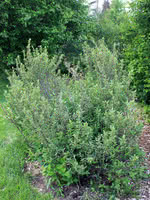Mon-Fri 9am - 5pm Mountain time
Canadian Buffaloberry vs Common Cattail
Shepherdia canadensis
Typha latifolia
CUSTOM GROW
Canadian Buffalo Berry is a native deciduous shrub found throughout North America. This hardy, medium-sized shrub will tolerate poor soil conditions and produces attractive, edible–though very bitter–red fruit.
Cattail is found all across North America, growing next to water. Like other waterside plants, Cattail provides erosion control and forage for animals.
It is suitable for land reclamation. Cattail is able to tolerate cold weather and occasional flooding.

